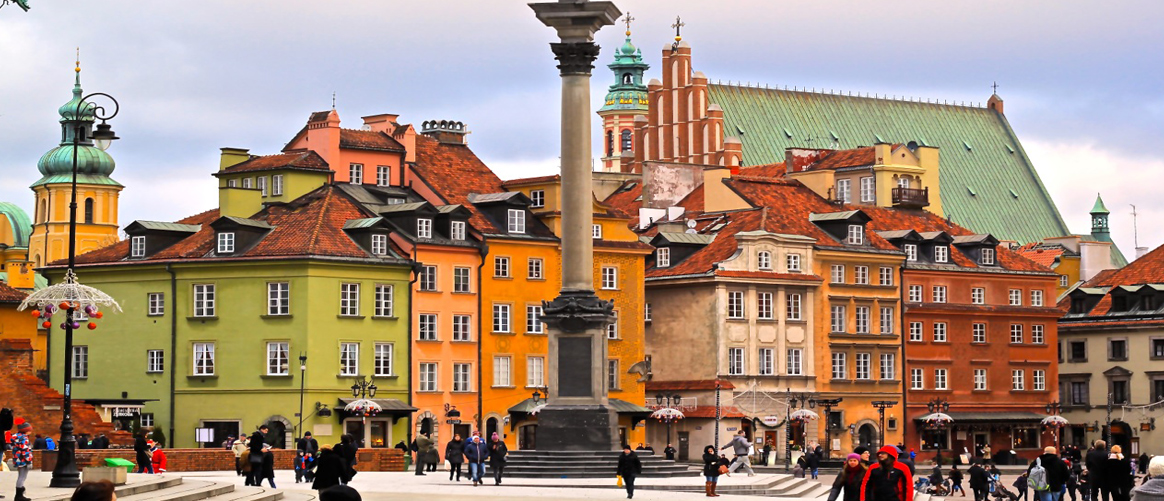
General Information
How To Reach Poland
Transport in Poland is provided by means of rail, road, marine shipping and air travel. Positioned in Central Europe with its eastern and part of its northeastern border constituting the longest land border of the Schengen Area with the rest of Northern and Central Europe, Poland has long been and remains a key country through which imports to the European Union and exports from it pass.
How to get to Poland By Air
Air travel enables you to get to the largest Polish cities quickly and comfortably. Airports are situated in the vicinity of most of the largest cities in Poland. They are serviced by many international airline companies. Both international and domestic flights are available from airlines amongst them LOT Polish Airlines. Many low budget airlines fly into Poland.
How to get to Poland by Rail and Roads
The railway network in Poland is well organized both in respect of convenient connections and the standard of travel. Some people have even suggested that Poland should be visited by train. Railway travel enables you to reach most of the cities and towns in Poland. The Polish carrier is Polskie Koleje Państwowe (PKP). Intercity, Eurocity and express trains run between the largest cities. Regional or local trains carry passengers to smaller towns and make frequent stops, so they give an opportunity to visit smaller towns and villages. Train fares depend on the route, standard and class. Many various promotional prices are always offered. For details ask at the railway station.
Events
With around 30 theatres and 60 cinemas, Warsaw is undoubtedly the cultural centre of Poland. These are supplemented by a myriad of festivals as diverse as the Chopin, Jewish Culture and the Warsaw International Film Festival. The city’s skyline, until recent shiny-squeaky additions, was long dominated by the splendidly over the top Palace of Culture and Science with the famous Congress Hall downstairs. Over the years it has hosted everyone from Marlene Dietrich to, in 1967, the Rolling Stones. Other places definitely worth exploring include the famous club Stodoła, lots of cutting edge concerts and the like, as well as the Palladium for more of a cabaret type evening.
Tourist Attractions
Auschwitz
The victims of the Holocaust are remembered at Oświęcim-Birkenau (Auschwitz-Birkenau) concentration camp (www.auschwitz.org.pl), now a state museum 66km (41 miles) from Cracow. Visiting is a sobering experience, but helps give you perspective on one of history’s darkest periods.
Beaches
Poland really boasts some of the very best beaches in northern Europe, especially the resorts along the Pomeranian coast, such as large and fashionable Kołobrzeg or Łeba, with a beach of fabulous white sand.
Białowieża National Park
Białowieża National Park (www.bpn.com.pl) is the last major refuge of the European bison as well as being home to many other rare forest-dwelling species and trees some 500 years old. Nature trails, cycling and exploring with a ranger are on offer.
Cracow
You’ll immediately feel the charming medieval atmosphere of Cracow (www.krakow.pl), written Kraków in Polish; it is one of UNESCO’s most significant historical sites. In the middle of the main market square (the largest in Europe) is the Cloth Hall, which was reconstructed in the 19th century from 14th-century merchants’ stalls.
Gdańsk
Gdańsk (www.gdansk.pl) is home to the largest Gothic church in Poland: St Mary’s Basilica. The beach resort at nearby Sopot has the Molo, Europe’s longest pier (515m/1700ft). Within easy reach are the forested Hel Peninsula and beach, the Kashubian Lakeland, and the Teutonic castles at Malbork and Gniew.
Masurian Lake District
The Masurian Lake District, consisting of over 1,000 lakes, is a favourite angling and boating destination. A popular trail can take you past several lakes and canals. Local towns such as Mikołajki and Giżycko host sea-shanty festivals and other lively events.
Warsaw Rising Museum
A walk through the Warsaw Rising Museum (www.1944.pl) is an educational and interactive experience. The museum features films, testimonials, slides and artefacts from WWII when Warsaw residents were active in the resistance.
Wieliczka Salt Mine
The Wieliczka Salt Mine (www.kopalnia.pl) boasts 300km (186 miles) of shafts, of which 2km (1.2 miles) are accessible to visitors on three levels. The tourist route is 64 to 135m (211 to 445ft) underground and passes through almost two dozen impressive chambers, with bas-reliefs, chandeliers and a chapel sculpted in salt.
Wrocław
Wrocław (www.wroclaw.pl), Breslau in German, is a city of 100 bridges, many of which cross canals or connect a dozen of the city’s islands. Important sights include the 15th-century town hall, now the City Historical Museum; the giant Racławice Panorama; and the cathedral on Ostrów Tumski (Cathedral Island).
Zamość
The Renaissance-style market square in Zamość (www.zamosc.pl)with its almost perfectly preserved 16th-century town centre is just one of the many designated UNESCO World Heritage sites in Poland.
Cities in Poland
Warsaw
Warsaw, Poland’s capital since the late 16th century, is by far the biggest and fastest developing Polish city. Its population is estimated at 1.71 million and, as a powerful economic and cultural centre, the city attracts great numbers of people from all over the country in the pursuit of education or better job opportunities. According to some sources, some 18 new people move to the city daily. Warsaw is also visited every year by thousands of tourists from all over the world, especially during the summer. The Polish capital Warsaw (Warszawa) still deserves your attention even though much of it was destroyed in the war. The Old Town was reconstructed from original plans and paintings from the 17th and 18th centuries – it’s hard to believe it’s just a half a century old when you stroll its quaint cobbled streets (www.e-warsaw.pl).
Krakow
Krakow, with a population of over 755,000 people, is Poland’s second largest city. Although it ceased to be a capital city in 1596, it still plays the role of cultural centre for Poland. Fortunately, it escaped World War II with no major fighting or bombing, and it remains almost unscathed even after fifty years of communist rule while concrete blocks of flats were built outside the city centre. Krakow is also an important academic city, famed for its ancient university of consistent and continuing repute. But above all, the city is known as the most popular tourist destination in Poland, with the former royal Wawel castle being rated among its major attractions. The majority of monuments are situated in the Old Town, framed by the ring-shaped park, known as “Planty”. In the centre of the Old Town there is Europe’s largest market square, with the “Sukiennice” (the Cloth Hall) dating from the 14th century and one of the best-known landmarks of Krakow. The charming and exuberant atmosphere of the city attracts visitors in every season.
Lublin
Lublin is undoubtedly worth a visit, even if it attracts fewer tourists than Krakow or Warsaw. Over the centuries it saw Polish and Jewish cultures harmoniously coexisting while the city’s fibre developed. The remnants of Lublin’s past deserve exploration, even if the sprawling suburbs might at first restrain you from going deeper. Overcome the temptation of bypassing Lublin, its Old Town is charming, though a little decayed. Besides this, the city offers other attractions, including a wild nightlife and a multitude of friendly restaurants and cafes.
Sopot
Among all the seaside resorts competing to be the summer capital of Poland, Sopot seems the most deserving. This is a fantastic holiday destination with sunny beaches, the longest wooden pier in Europe, and an active nightlife provided by its numerous bars, pubs and clubs. The Art Nouveau buildings remind us of the times when Sopot was the most fashionable seaside resort of pre-war Germany. Two other interesting cities nearby are Gdansk and Gdynia.










